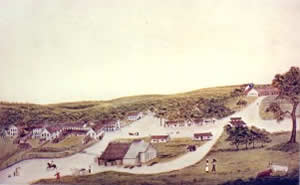 |
| During the summer of 1839 Waller and his crew had erected several public buildings, and a number of homes made of rough-hewn oak logs were also built. Copyrighted image courtesy of the The Daughters of the Republic of Texas, Republic of Texas Museum. [PICA 01079] enlarge image |
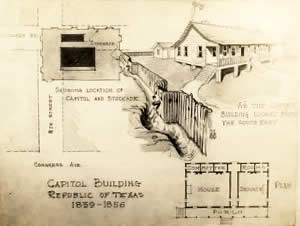 |
Austin's first "temporary"
capitol was built of Bastrop plank lumber on a hilltop west
of Congress Avenue. [C 00241] enlarge
image
|
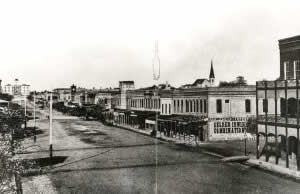 |
| Photographer H.B. Hillyer recorded this view of the 1853 "Old Stone Capitol" and Congress Avenue prior to the completion of the new Presbyterian Church's steeple in 1875. [C 00030] enlarge image |
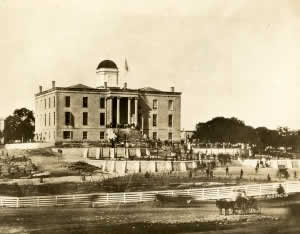 |
| The Old Stone Capitol as it appeared during the funeral of Reconstruction Governor Andrew Jackson Hamilton on April 12, 1875. Although situated in Capitol Square, some feel it was never intended to be a lasting monument to the State of Texas, since the election of 1850 had only named Austin the capital city for twenty years. [C 00253] enlarge image |
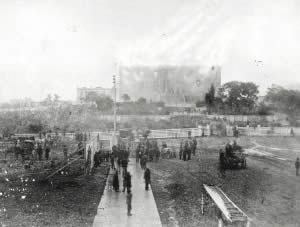 |
When the Old Stone Capitol burned on the cold, rainy morning of November 9, 1881, plans for a new capitol building were already underway. The Capitol Board, meeting in the building at the time of the fire, quickly removed the plans to safety. [C 00231] enlarge image
|
|
|

Austin is one of two cities in the United States that was originally planned and platted to be the capital of a nation. When Edwin Waller arrived in April 1839 to transform the three-family community of Waterloo into the capital of the Republic of Texas, he came with the charge of surveying the land on the north bank of the Colorado River and turning it into Austin--the nation's capital city--by October.
The plan he drew up had as its focal point a 26-acre site called Capitol Square, which overlooked Congress Avenue from the top of a hill above the river and the town-to-be.
But the first capitol in Austin was not built there. It was built on another hilltop, at the corner of 8th and Colorado where City Hall is located now. It was a cabin of rough Bastrop pine with two large rooms, one each for the House and Senate. The first Austin session of Congress was held in that capitol in November 1839, at which time that building was one of very few structures in the town. The Capitol also served as a community gathering place because of its large rooms and as a refuge against Indian raids because of its eight-foot stockade fence.
By 1850, Texas had become a part of the United States. The state legislature appropriated the funds for a more permanent capitol, this time on the original site of Capitol Square. Finished in 1853, the new Texas Capitol was built of local limestone at a cost of $150,000. With its small crowning dome, it surveyed Congress Avenue and the town as Edwin Waller once had imagined it should.
The Civil War brought devastation to both the town's and state's economies. With the end of the war and of Reconstruction, a statewide election was scheduled to determine whether Austin would remain the permanent site of the state's capital, or whether it should be moved to some other town, such as Waco or Houston. Austin won the 1872 election. The new 1876 Texas constitution contained a provision for financing yet another new capitol building, and a program for its design was developed. In November 1881, just as the new plans were being completed, the 1853 capitol burned in a spectacular fire. A temporary capitol was built across the street at the corner of Congress and 11th, which served while the new capitol was constructed. The fire added a new sense of urgency to the building schedule.
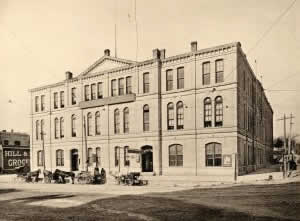 |
| Following the destruction of the Old Stone Capitol, the state government temporarily found shelter in the Travis County Courthouse, the county jail, and privately owned offices before constructing the Temporary Capitol Building. [PICA 06180] enlarge image |
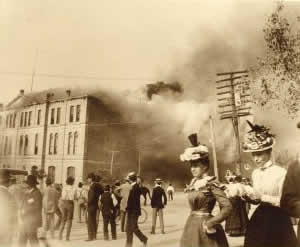 |
| On September 30, 1899, the Temporary Capitol burned. Today the building's foundation is still visible in a park-like setting north of the Old Bakery. [C 00233] enlarge image |
|